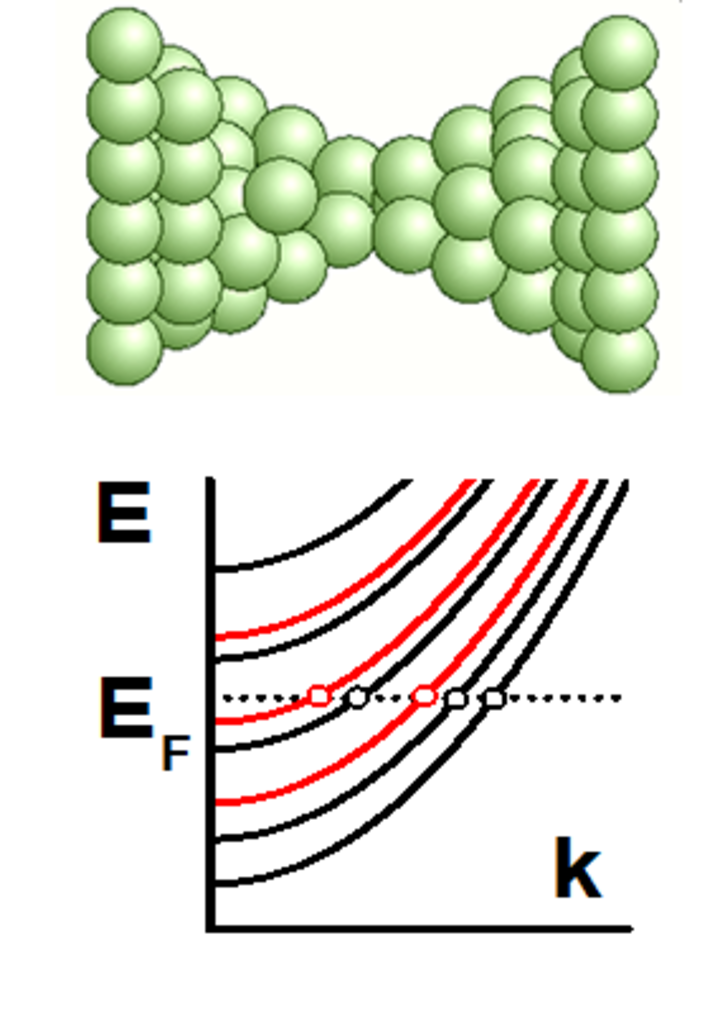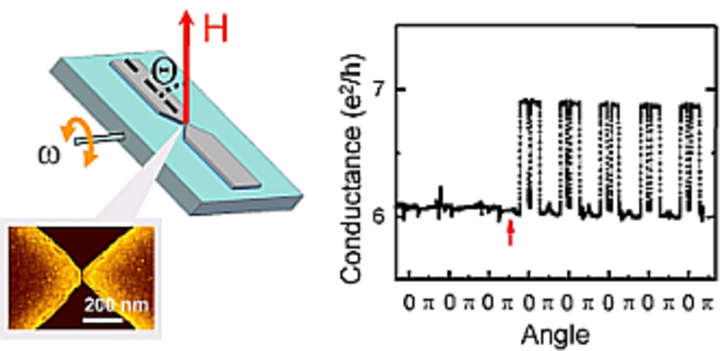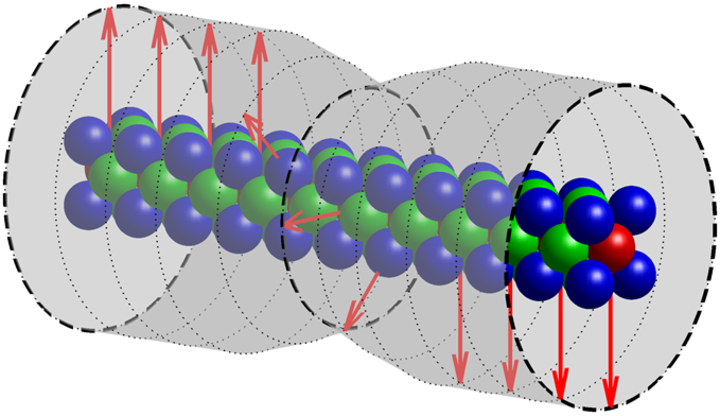When the dimensions of a metallic conductor are reduced so that they become comparable to the de Broglie wavelengths of the conduction electrons, the absence of scattering results in ballistic electron transport and the conductance becomes quantized. In ferromagnetic metals, the exchange splitting of spin bands leads to spin-dependent conductance quantization and various unusual magnetoresistive phenomena.
We are using first-principles and model calculations to predict new spin-dependent transport properties of magnetic nanocontacts and nanowires. In particular, we have predicted the existence of Ballistic Anisotropic Magnetoresistance (BAMR) which originates from the effect of spin-obit interaction on ballistic conductance. Due to spin-orbit coupling a change in the saturation magnetization direction of a magnetic nanocontact (or a nanowire) can alter the number of bands crossing the Fermi energy and thus affect the quantized conductance. This phenomenon was confirmed experimentally in Co electrodeposited nanocontacts by in-situ investigation of their spin-dependent transport properties. Further investigations are aimed at searching for new materials and nanostructures where the BAMR can be reproducibly observed in well-defined geometries.
Another direction of our research has been focused on properties of magnetic domain walls in constrained geometries and their effect on spin transport. Magnetic domain walls at the nanoscale may be much narrower than those in bulk materials. This leads to a greater domain wall resistance because electrons traveling across the constrained domain wall are scattered more efficiently by the abruptly changing spin structure. In addition, in geometries where the domain wall width is reduced down to a few interatomic distances the sharp variation in the spin structure affects the magnitude of magnetic moments forming the domain wall. We explore these phenomena using first-principles and model approaches.
References
- J. D. Burton and E. Y. Tsymbal, "Magnetoresistive phenomena in nanoscale magnetic contacts" in Oxford Handbook of Nanoscience and Technology, vol.1, eds. A. V. Narlikar and Y. Y. Fu (Oxford, UK: Oxford University Press, 2010) p. 677.
- J. D. Burton, R. F. Sabirianov, J. P. Velev, O. N. Mryasov, and E. Y. Tsymbal, "Effect of tip resonances on tunneling anisotropic magnetoresistance in ferromagnetic metal break-junctions: A first-principles study," Phys. Rev. B 76, 144430 (2007).
- A. Sokolov, C. Zhang, E. Y. Tsymbal, J. Redepenning, and B. Doudin, "Quantized magnetoresistance in atomic-size contacts," Nature Nanotech. 2, 171 (2007).
- J. D. Burton, R. F. Sabirianov, S. S. Jaswal, E. Y. Tsymbal, and O. N. Mryasov, "Magnetic moment softening and domain wall resistance in Ni nanowires," Phys. Rev. Lett. 97, 077204 (2006).
- R. Sabirianov, A. K. Solanki, J. D. Burton, S. S. Jaswal, and E. Y. Tsymbal, "Domain wall magnetoresistance in Co nanowires," Phys. Rev. B 72, 054443 (2005).
- J. Velev, R. Sabirianov, S. S. Jaswal, and E. Y. Tsymbal, "Ballistic anisotropic magnetoresistance," Phys. Rev. Lett. 94, 127203 (2005).
- J. D. Burton, A. Kashyap, M. Ye. Zhuravlev, R. Skomski, E. Y. Tsymbal, S. S. Jaswal, O. N. Mryasov, and R. W. Chantrell, "Field-controlled domain wall resistance in magnetic nanojunctions," Appl. Phys. Lett. 85, 251 (2004).
- A. K. Solanki, R. F. Sabiryanov, E. Y. Tsymbal, and S. S. Jaswal, "Conductance of Ni nanocontacts within first-principle approach," J. Magn. Magn. Mater. 272, 1730 (2004).
- M. Y. Zhuravlev, E. Y. Tsymbal, S. S. Jaswal, A. V. Vedyayev, and B. Dieny, "Spin blockade in ferromagnetic nanocontacts," Appl. Phys. Lett. 83, 3534 (2003).

Schematic of atomic and electronic structure of a magnetic nanocontact.

Experimental manifestation of ballistic anisotropic magnetoresistance.

Domain wall in Ni nanowire showing softening of a magnetic moment.